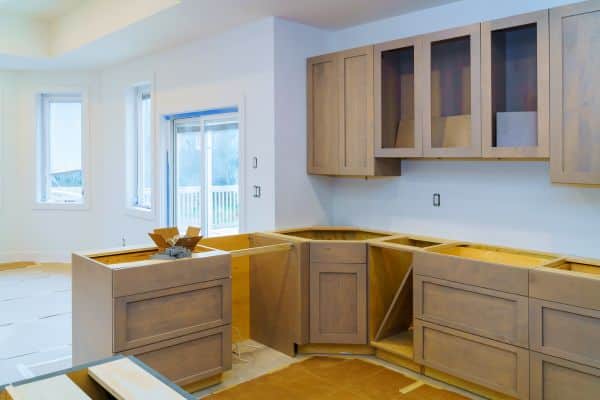The kitchen is the heart of the home, and its layout plays a pivotal role in its functionality. If you’re planning a kitchen remodel, whether to update the space or improve its efficiency, thoughtful layout design is key. A well-organized kitchen not only enhances your cooking experience but also adds value to your home. In this guide, we’ll explore the essential steps to create an efficient kitchen layout during your remodel.
Assess Your Needs and Goals
Before diving into the design phase, take time to assess your needs and goals for the kitchen. Consider your cooking habits, the number of people using the space, and any specific features or appliances you desire. This initial evaluation will help shape the layout.
The Work Triangle
The work triangle is a fundamental principle of kitchen design, emphasizing the efficient flow between the sink, stove, and refrigerator—the three most-used areas in the kitchen. Aim to create a balanced work triangle, with each leg measuring between 4 and 9 feet. This layout minimizes unnecessary movement while cooking.
Zones and Task Areas
Beyond the work triangle, identify specific zones and task areas based on your needs. These might include prep areas, baking stations, coffee nooks, and even a dedicated space for children’s snacks or homework. Allocate sufficient counter and storage space for each zone.
Appliance Placement
Carefully plan the placement of your kitchen appliances. Ensure that the refrigerator, dishwasher, and oven are easily accessible without interfering with the work triangle. Consider built-in or under-counter appliances to save space and create a streamlined look.
Storage Solutions
Effective storage is crucial for an efficient kitchen. Invest in ample cabinets, drawers, and pantry space. Utilize pull-out shelves, lazy Susans, and vertical dividers to maximize storage efficiency. Consider open shelving for frequently used items or decorative displays.
Island or Peninsula
If space allows, consider adding an island or peninsula to your kitchen layout. These features can provide additional counter space, storage, and a casual dining area. Ensure there’s sufficient clearance around the island to move comfortably.
Lighting
Proper lighting is essential in the kitchen. Incorporate a mix of task, ambient, and accent lighting to create a well-lit and inviting space. Under-cabinet lighting is excellent for illuminating work areas, while pendant lights can add a decorative touch.
Flooring and Materials
Choose durable and easy-to-maintain flooring materials, especially in high-traffic areas. Consider the aesthetic appeal of flooring and its compatibility with the overall kitchen design.
Ventilation
Don’t overlook ventilation. Proper ventilation, such as a range hood, is essential for removing cooking odors and maintaining indoor air quality.
Accessibility and Safety
Design your kitchen with accessibility and safety in mind. Ensure that countertops and appliances are at comfortable heights, install slip-resistant flooring, and include childproofing measures if needed.
Flexibility for the Future
Plan for flexibility and adaptability in your kitchen design. Trends change, and your needs may evolve over time. A well-designed kitchen should accommodate future updates or modifications without major structural changes.
Seek Professional Advice
While planning your kitchen layout, it’s advisable to consult with a professional kitchen designer or architect. Their expertise can help you make informed decisions and optimize your space efficiently.
In conclusion, creating an efficient kitchen layout during remodels involves careful planning and consideration of your specific needs and goals. By prioritizing functionality, organization, and aesthetics, you can transform your kitchen into a space that not only serves as a culinary hub but also enhances the overall quality of your home life.



